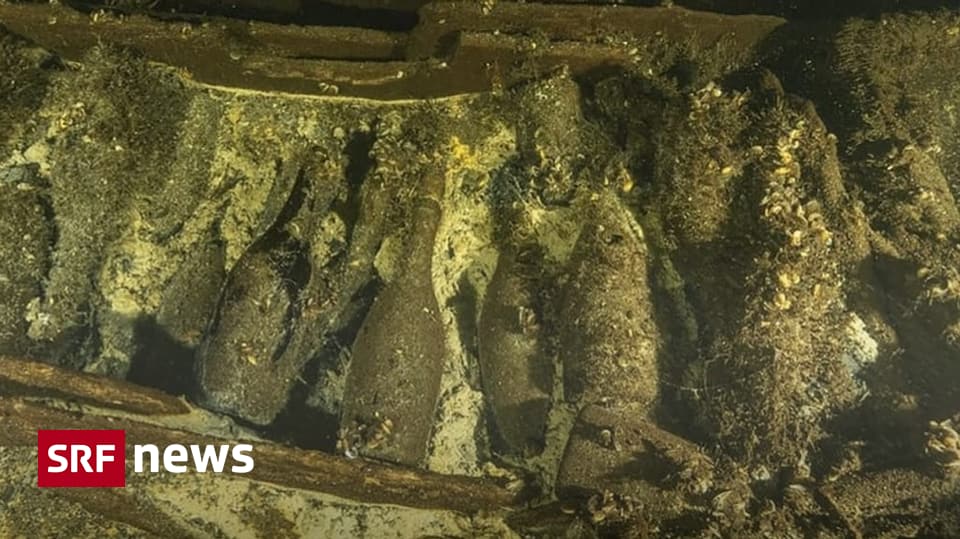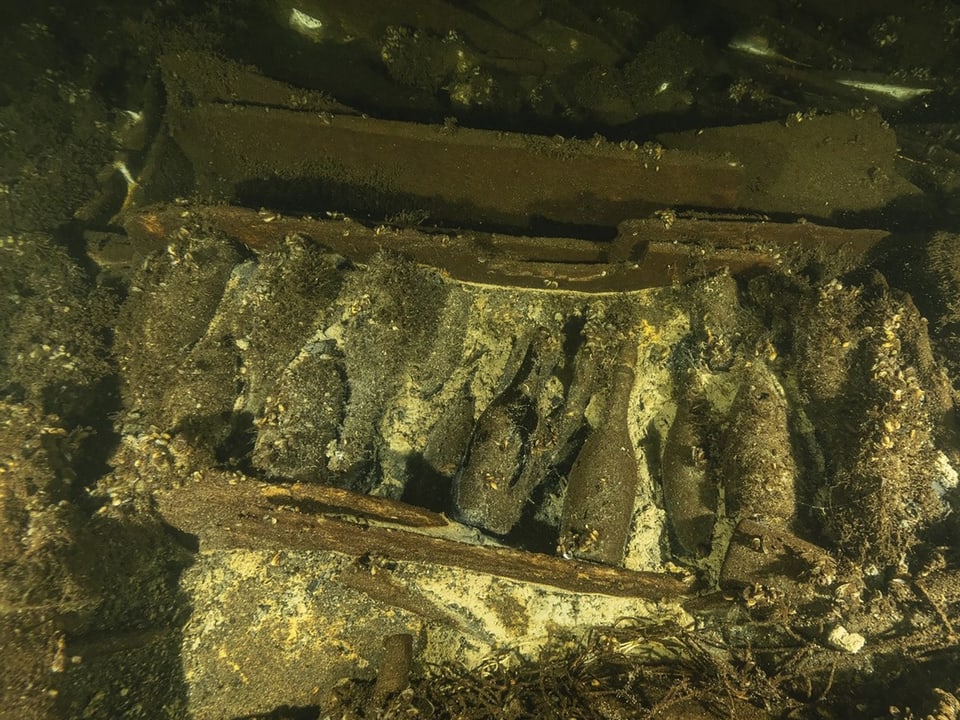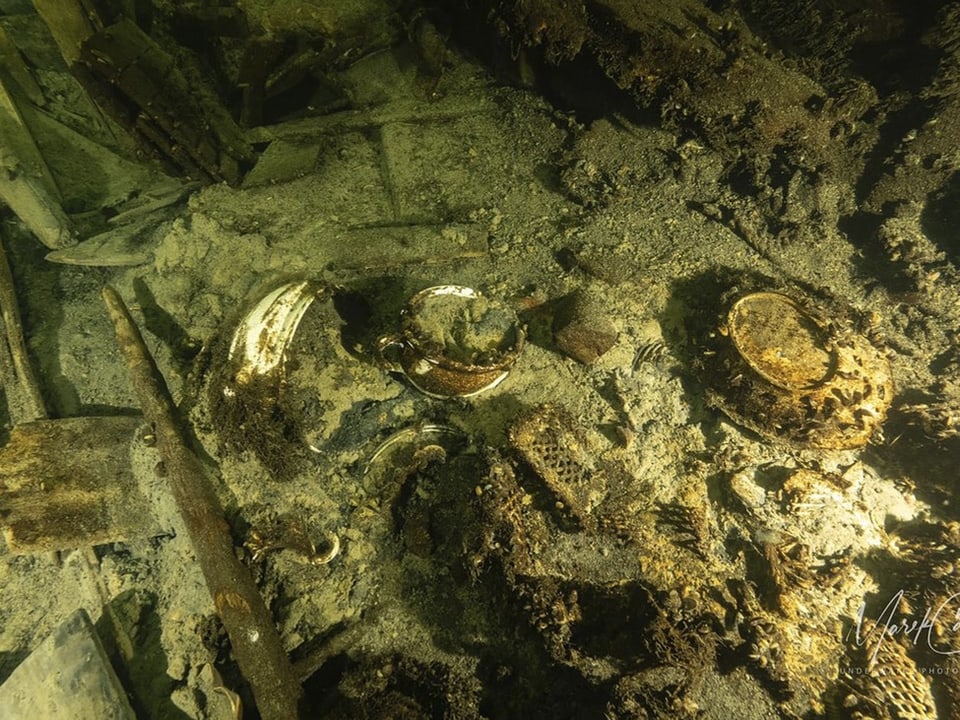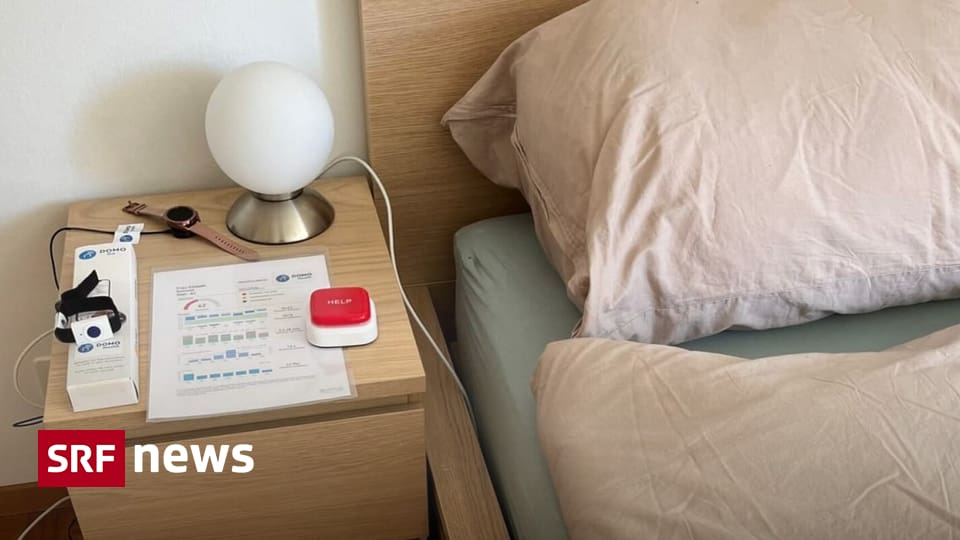
The treasure was unearthed from the wreck of a nearly 150-year-old ship. The bottles are probably worth thousands of francs.
According to initial estimates, the ship with its classic liquor cargo sunk between 1850 and 1876 – and the finds are correspondingly old. According to expedition leader Tomas Stachura, the diving team initially mistook it for a fishing trawler at a depth of 58 meters.
The treasure was discovered in mid-July during several hours of diving: “We saw more than 100 champagne bottles and mineral water baskets in clay bottles,” said diver Tomas Stachura. In the case of Champagne, the written residue on the cork refers to the well-known French company Louis Roederer.
Valuable collector’s items
The dive will be worth it for the Polish team: collectors in particular will have to dig deep into their pockets for the bottles: “Collectors have already spent ten to thirty thousand francs per bottle for similar finds,” says SRF business editor Pascal. Lago A.

A shipwreck with valuable cargo was discovered south of the Swedish island of Åland.
Tomasz Stachura / Baltictech / AP
Bottles of champagne may have been on the way to the Swedish royal family or the Russian czar at the time. This makes collectors’ hearts beat even faster, says Lago.
But is centuries-old champagne even drinkable? “According to experts, laboratory tests should be carried out first to determine if the drink is still safe,” says Pascal Lago. “But as a rule, champagne stores well even in perfect conditions on the sea floor.” A constant temperature of two to four degrees, a horizontal position and complete darkness: this excellent wine ages well.
Mineral Water: Medicine for the Rich
Mineral water seems less noble today. In the 19th century it was completely the opposite: “At that time, mineral water was more valuable than champagne. Because it was treated like a medicine. Only the very rich could afford it,” explains the business teacher.
Transportation at that time was complicated: precious mineral water was transported only under police protection.
Initial analysis of the underwater photographs revealed that the mineral water may have come from the German company Selders. “Thanks to the shape of the seal and the help of historians, we know that the water was bottled between 1850 and 1876, indicating the most likely period of the ship’s sinking,” expedition leader Tomas Stachura said.

The ship was loaded with luxury goods including porcelain utensils.
Tomasz Stachura / Baltictech / AP
A diving team specializing in wreck searches has now reported to the Swedish University of Södertörn near Stockholm, which deals with underwater archaeology. “Ultimately, the Swedish authorities decide what happens to the shipwreck,” says Pascal Lago. “But divers shouldn’t go completely empty-handed.”

“Wannabe pop culture fanatic. Zombie advocate. Entrepreneur. Internet evangelist. Alcohol fanatic. Typical travel buff.”






More Stories
Choosing the Right Quality Management Software for Your Industry
If guests bring items: Can shower gel be packed from the hotel?
Digital Technologies for the Elderly: Increasing Aging at Home – News